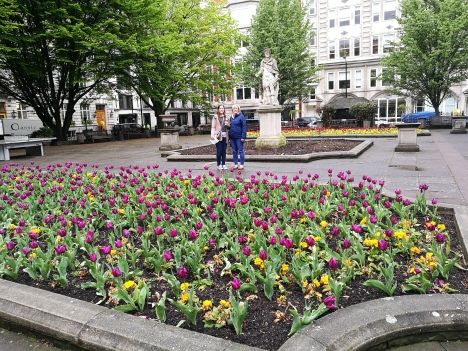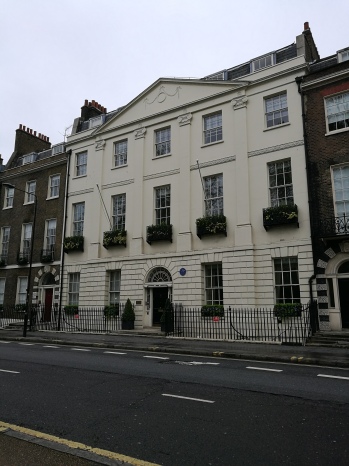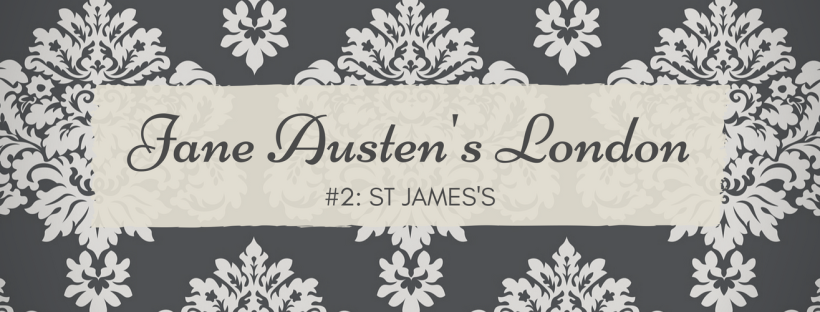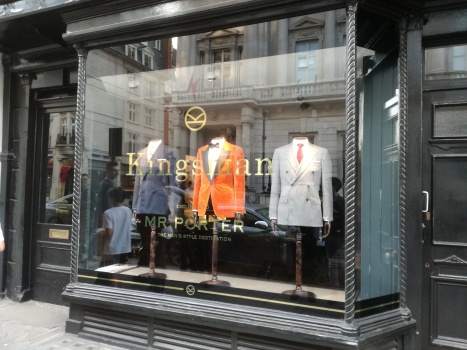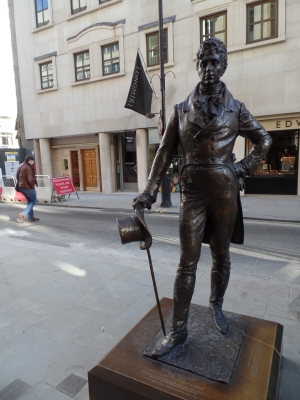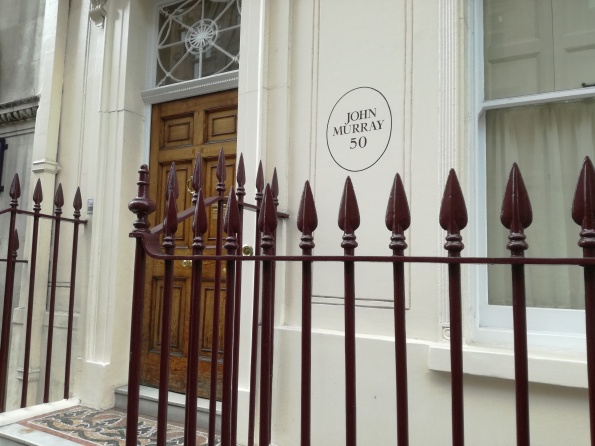For the original post in this series, click here.
I’m so excited to be writing another post in this series! It’s been so long since I last did one of the walks from Louise Allen’s Walking Jane Austen’s London, and I’ve really missed doing them – so when my mum decided to visit the other weekend, it seemed like the perfect opportunity.
This walk started outside the Twining’s tea shop near Temple station, where my mum and I both went into raptures (as Jane Austen might say) over the delicious selection of teas on offer. It’s safe to say that we’re both tea lovers, so naturally we couldn’t resist making a purchase or two at the shop where the Austens used to purchase their own tea.

It’s quite clear who I got my love of tea from!
Just outside the tea shop is a monument to the Temple bar, which stood as the historic gateway between the fashionable Westminster and the commercial City. It wouldn’t have interfered with road traffic in Jane Austen’s London, but sadly it became a hindrance to today’s motorists and had to be removed in 2004 – but luckily you can still view the impressive gateway in its new home outside St Paul’s Cathedral.

The entire area of Fleet Street down towards St Paul’s is an interesting blend of historical and modern architecture, with brand new office blocks often just around the corner with buildings dating from before the Great Fire of London in 1666. One particular building of interest to me was the spire of St Bride’s Church, which apparently inspired a Georgian baker to create the tiered style of wedding cake which is so familiar to us now. I had no idea that it was such an old tradition, but it’s fun to think of Jane Austen’s characters eating a cake modelled on this beautiful church spire in their weddings.

And speaking of Jane Austen characters’ weddings, the final portion of this walk was particularly exciting, since it took us to the (probable) location of perhaps the most infamous Jane Austen wedding of all!
I’m talking about none other than the marriage of Miss Lydia Bennet to Mr George Wickham in Pride and Prejudice, which Lydia writes of as taking place in “St Clement’s”. The location is very likely St Clement’s Church on Clement’s Lane, as it is just around the corner from Gracechurch Street, where Lydia’s aunt and uncle Gardiner lived. It’s not a particularly grand, impressive church, tucked away down a narrow street – but to me it seemed to perfectly fit the rather seedy nature of Lydia and Wickham’s marriage!

As always, it was so much fun to discover more about London in Jane Austen’s time, and how she wove parts of the city into her novels! If you enjoyed this post, make sure to check out the previous posts in this series 🙂
SOURCES
[1] ALLEN, LOUISE – WALKING JANE AUSTEN’S LONDON (SHIRE, 2017)


